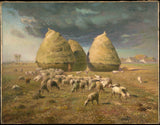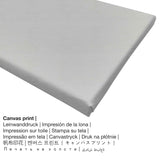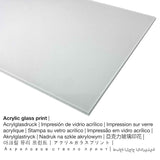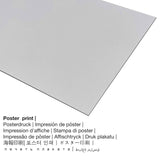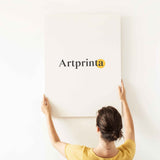Jean-François Millet, 1874 - Haystacks: Mgbụsị akwụkwọ - ọmarịcha nka
Ụtụ gụnyere. Mbupu gbakọrọ na ndenye ọpụpụ.
Ozi mgbakwunye site na webụsaịtị ihe ngosi nka (© - nke Ụlọ ihe ngosi nka nke Obodo ukwu - Museumlọ ihe ngosi nka nke Obodo)
This picture is from a series depicting the four seasons commissioned in 1868 by the industrialist Frédéric Hartmann. Millet worked on the paintings intermittently for the next seven years. In Autumn, with the harvest finished, the gleaners have departed and the sheep are left to graze. Beyond the haystacks lie the plain of Chailly and the rooftops of Barbizon. The loose, sketchlike finish of this work is characteristic of Millet's late style: patches of the dark lilac-pink ground color are deliberately exposed, and the underdrawing is visible, particularly in the outlines of the haystacks and the sheep.
Data ndabere gbasara nka nka izizi
| Aha nke ọrụ nka: | "Haystacks: Autumn" |
| Nhazi: | sere |
| Otu izugbe: | nkà nke oge a |
| Narị afọ nka: | 19th narị afọ |
| Emepụtara na: | 1874 |
| Afọ nka: | karịa afọ 140 |
| Agba na: | mmanụ na kwaaji |
| Nha ihe osise izizi: | 33 1/2 x 43 3/8 na (85,1 x 110,2 cm) |
| Ụlọ ihe ngosi nka: | Museumlọ ihe ngosi nka nke Obodo |
| Ebe ebe ngosi nka: | New York City, New York, Njikota Obodo Amerika |
| E Nwere na: | www.metmuseum.org |
| Licensedị ikike: | ngalaba ọha |
| Site n'aka: | Ụlọ ihe ngosi nka nke Metropolitan, New York, Arịrịọ nke Lillian S. Timken, 1959 |
| Ebe kredit nke ọrụ nka: | Arịrịọ nke Lillian S. Timken, 1959 |
Tebụl nchịkọta ihe nkiri
| Aha onye nka: | Jean Francois Millet |
| Gender: | nwoke |
| Obodo onye nka: | French |
| Ọrụ nke onye na-ese ihe: | onye na-ese ihe |
| Mba onye si: | France |
| Nkewa onye nka: | omenkà nke oge a |
| styles: | Ihe ngosi |
| Nwụrụ na afọ nke: | 61 afọ |
| A mụrụ: | 1814 |
| Nwụrụ n'afọ: | 1875 |
| Nwụrụ na (ebe): | Barbizon |
Data ndabere ihe
| Ụdị ngwaahịa: | nka nka |
| Mmeputakwa: | dijitalụ mmeputakwa |
| Produzọ mmepụta: | Mbipụta UV ozugbo (mbipụta dijitalụ) |
| Mmalite nke ngwaahịa a: | arụpụtara na Germany |
| Stockdị ngwaahịa: | a na-achọ |
| Eji ngwaahịa emebere: | foto mgbidi, nchịkọta nka (mmepụta) |
| Nhazi nke ihe nka: | usoro odida obodo |
| Oke akụkụ: | 4: 3 - ogologo: obosara |
| Mmetụta akụkụ: | ogologo bụ 33% ogologo karịa obosara |
| Akụrụngwa ị nwere ike ịhọrọ site na: | Mbipụta kwaaji, mbipụta ọla (aluminium dibond), mbipụta akwụkwọ mmado (akwụkwọ kwaaji), mbipụta enyo acrylic (nwere ezigbo mkpuchi iko) |
| Mpempe akwa akwa (akwa akwa na etiti ihe ndọtị) nha: | 40x30cm - 16x12", 80x60cm - 31x24", 120x90cm - 47x35", 160x120cm - 63x47" |
| Mbipụta iko acrylic (nwere ezigbo mkpuchi iko) nhọrọ nha: | 40x30cm - 16x12", 80x60cm - 31x24", 120x90cm - 47x35" |
| Ụdị akwụkwọ mmado (akwụkwọ kwaaji) dị iche iche: | 40x30cm - 16x12", 80x60cm - 31x24", 120x90cm - 47x35" |
| Ụdị mbipụta aluminom dibond: | 40x30cm - 16x12", 80x60cm - 31x24", 120x90cm - 47x35" |
| Nhazi mmeputa nka nka: | agunyeghi |
Họrọ ihe ị chọrọ
For every art print we offer different materials & sizes. You can choose your preferred material and size among the following options:
- Mbipụta nke aluminom: An Aluminium Dibond print is a material with a true depth effect. The bright and white parts of the artwork shimmer with a silky gloss but without the glare.
- Mbipụta akwụkwọ mmado (akwa akwa akwa): The Artprinta poster print is a UV printed canvas paper with a slightly roughened surface finish, which reminds the original version of the work of art. It is optimally suited for putting your art copy using a customized frame. Please note, that depending on the absolute size of the canvas poster print we add a white margin between 2 - 6cm round about the artwork to facilitate the framing with your custom frame.
- Glass acrylic e biri ebi (nwere ezigbo mkpuchi iko): The acrylic glass print, which is often referenced as a an art print on plexiglass, changes the original artwork into brilliant home décor.
- Mbipụta kanvas: The canvas direct print is a printed canvas stretched on a wooden stretcher. It creates the extra effect of three-dimensionality. Canvas prints are relatively low in weight. That means, it is easy and straightforward to hang your Canvas print without the use of any wall-mounts. A canvas print is suitable for all kinds of walls.
Nkọwa nke ngwaahịa
This painting was created by the painter Jean-François Millet. The more than 140 Original dị afọ nwere nha: 33 1/2 x 43 3/8 na (85,1 x 110,2 cm). Mmanụ na kwaaji was applied by the European artist as the technique for the piece of art. Nowadays, the piece of art is part of the digital art collection of Museumlọ ihe ngosi nka nke Obodo in New York City, New York, Njikota Obodo Amerika. Site n'ikike nke: Ụlọ ihe ngosi nka nke Metropolitan, New York, Arịrịọ nke Lillian S. Timken, 1959 (ikike - ngalaba ọha). Ihe kredit nke artpiece bụ: Arịrịọ nke Lillian S. Timken, 1959. Ọzọkwa, itinye n'usoro mmepụta dijitalụ dị odida obodo format ma nwee oke onyonyo nke 4: 3, nke pụtara na ogologo bụ 33% ogologo karịa obosara. The painter Jean-François Millet was an artist from France, whose artistic style can primarily be attributed to Realism. The painter was born in 1814 ma nwụọ na afọ nke 61 Na 1875 na Barbizon.
Nkwupụta iwu: We try everythig possible in order to depict the art products as accurate as possible and to display them visually in our shop. Nonetheless, the pigments of the print materials and the print result may vary marginally from the image on your device's monitor. Depending on the settings of your screen and the nature of the surface, not all color pigments are printed as exactly as the digital version shown here. Bearing in mind that all the art reproductions are processed and printed manually, there might also be minor differences in the motif's size and exact position.
© Nwebiisinka nke, Artprinta.com

